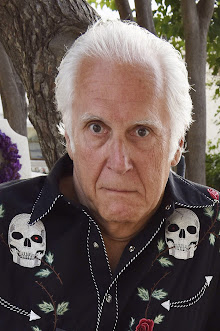Annamaria on Monday
Anya Seton
I was fourteen when my mother borrowed Katherine by Anya Seton from the Paterson Public Library. I was about to graduate from elementary school and until I entered high school, allowed only books from the children's section--all of which I had already read.
My mom had long-since given me permission to read the books she borrowed. So that Saturday, after finishing my chores, I was lying on the living room floor reading a historical novel for the first time. Mom's friend Carmel came in for what they called, "Coffee and." As she passed into the kitchen, Carmel said to my mother, "You know, Ann, that girl is never going to find a husband if she always has her nose in a book."
Little did she know that I had, within the half-hour, read the line, "Her lips were drawn to his like a moth to a flame." The Katherine of that great book (on the BBC's list of the 100 best British novels of all time) was Katherine Swynford--the mistress of John of Gaunt. From their children (legitimated after their later marriage) descended the Tudors, the Stuarts, and the current British royal family.
Aside: The past weekend's big wedding was hailed as a huge departure from the post-Victorian marital niceties. But like all royalty, the English throne sitters have always had some pretty sexy skeletons their closets. But let's get back to my first historical novelist heroine.
Anya Seton was born in 1904 not on that sceptered isle she wrote about, but on the one where I now live--Manhattan, New York. She grew up in toney Cos Cobb, Connecticut. I guess her novels get to be called "British" because her father was English-born.
Her historical romances were best sellers. Two of them--Dragonwyck (1944) and Foxfire (1951) were made into Hollywood films. Her novel Katherine is a classic of the genre. That one historical novel got me hooked for life. Whenever I have mentioned it at a library or conference as one of the books that influenced me, it always gets a big round of applause. I still own a copy--one that I bought at a library books sale when I was in high school. It is held together with rubber bands. I will never part with it.
Sigrid Undset
My High School English teacher recommended Undset's Kristin Lavransdatter to me for my summer reading. The trilogy is comprised of three novels, originally published individually. They all tell of Medieval Scandanavia--the life of Kristin from birth till death. The writing is so vivid that decades after the last time I read it, I can still picture the landscape, the buildings, the bed built into a closet that Undset described.
Born in Denmark and brought up from the age of two in Norway, Sigrid Undset began her writing career after the death of her father when she was just sixteen. Her first attempts at historical fiction garnered rejections from publishers. At age twenty-five, already a member of the Norwegian Authors' Union, she turned her pen to contemporary novels--almost all, stories of women adulterers. She gained notoriety and high sales figures. But in her heart she still wanted to write of history.
She made her way to Rome, married, and lived there for a number of years, achieved her writing heart's desire, and eventually returned to Norway. The three novels of the Kristin Lavransdatter series were published between 1920 and 1922. Undset won the Nobel Prize for literature in 1928.
Depressed, in the wake of the devastation of WWI, she incurred the wrath of her countrymen by converting to Catholicism. In the face of the occupation of Norway during WWII, she--an avowed anti-fascist--escaped to the United States, where she lived in Brooklyn Heights. She returned to Norway after the war.
I still have my copy of Kristin Lavransdatter, the one I bought secondhand when I was in high school. It is 1069 pages--three novels in one volume. I will never part with it either.
These two brilliant women converted me once and for all. I still read contemporary fiction. But when my hand reaches out for a book, much more often than not, my soul directs it to stories that will bring me into the past and make me feel as if I am there. And when my imagination wants to make up a story, it is always drawn to the long ago and far away. Always.
Dancing (and baking) Sugar Plums
6 hours ago

























While I enjoy a good historical novel, most of my life I've been drawn to stories of "what might be and far away," science fiction. In many ways, I'm living today in a world forecast by the science fiction writers of my youth (and before my birth), and in other ways (alas) I'm living in the world warned of by dystopian science fiction writers. Sigh.
ReplyDeleteEvKa, for me, the only genres it is possible to write in currently are Historical fiction (it's over and we are still here), Political satire about the situation in the USA, and Tragedy about the situation in the Middle East. Since I already spend too much time thinking about the second and the third, I am happy to be able to stick my poor sad soul in the fictional past for as much of the time as I can.
ReplyDeleteI wrote a SciFi story in my youth. It's conclusion was a commentary on life on earth. It was true then and has become even truer pretty much ever since.
You give new breath to those who inspired you to write. That said, I never had a teacher who gave me an historical to read. My seventh grade teacher gave me a thriller called "Shattered." I don't remember the author's name, but from what I recall of the content, today I think she'd be up on charges for her act of literary kindness toward a twelve-year-old boy.
ReplyDelete